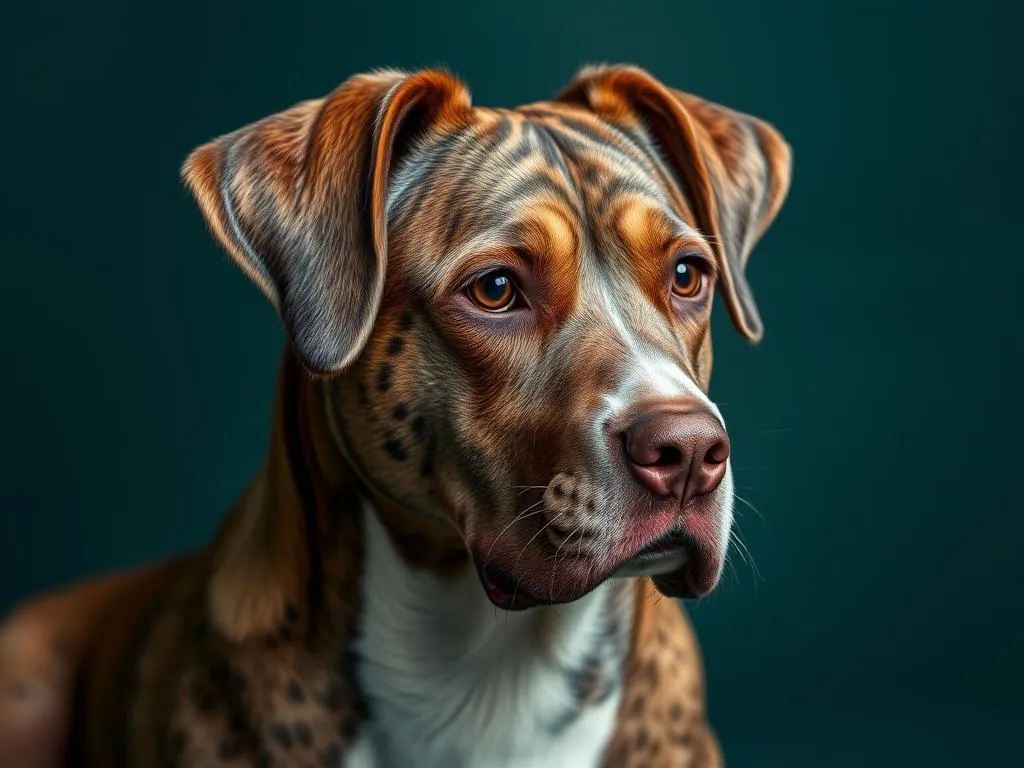
Introduction
The term merle refers to a distinctive coat pattern that is characterized by a mottled or patchy appearance, often combining colors like black, blue, and gray. In the context of dog breeds, the merle coat pattern can create stunning visual effects, making these dogs particularly sought after. Understanding the merle dog breeds is vital for potential dog owners, breeders, and enthusiasts alike, as it encompasses a range of genetic considerations and health implications.
The merle pattern is not merely a cosmetic feature; it has significant relevance in breeding practices and genetics. This article will provide a comprehensive overview of merle dog breeds, including their genetic makeup, popular breeds, health considerations, ethical concerns, and care requirements. By the end, you will have a well-rounded understanding of these unique dogs.
Understanding Merle Genetics
The Genetics Behind Merle
The merle gene, often denoted as the “M gene,” is responsible for the unique coat pattern. This gene affects the distribution of pigment in a dog’s coat, leading to the characteristic mottled appearance. When a dog inherits the merle gene, it can express varying degrees of the pattern, which can result in different color combinations.
Inheritance of the merle pattern follows a simple Mendelian trait; a dog can be either homozygous (MM) or heterozygous (Mm) for the merle gene. However, dogs that are homozygous for the merle gene often experience severe health issues and are generally not viable. Therefore, responsible breeders typically breed only heterozygous merle dogs.
Types of Merle Patterns
There are several types of merle patterns seen in dog breeds:
-
Solid Merle: This pattern features a solid base color with patches of lighter color, often creating a striking contrast.
-
Blue Merle: A popular variation that combines gray and black patches, creating a beautiful silvery appearance.
-
Cryptic Merle: These dogs have a subtle merle pattern that may not be immediately recognizable, making them tricky for even experienced breeders to identify.
Visual representations of these patterns can greatly assist in understanding the genetic diversity found within merle coat patterns.
Popular Merle Dog Breeds
Australian Shepherd
The Australian Shepherd is one of the most recognized breeds featuring the merle coat pattern. Known for their intelligence and herding abilities, they are energetic and require ample exercise. The merle variations within this breed can include blue merle and red merle, each with its own distinct beauty. Their temperament is typically friendly and loyal, making them excellent family pets.
Dachshund
The Dachshund is another breed that showcases the merle pattern, often seen in both standard and miniature sizes. Merle Dachshunds are known for their unique appearance, with a combination of colors that can range from blue to chocolate. However, potential owners should be aware that merle Dachshunds may be prone to certain health concerns, such as intervertebral disc disease (IVDD), which is common in the breed.
Border Collie
The Border Collie is celebrated for its herding skills and intelligence. This breed also exhibits the merle coat pattern, particularly in a blue merle variation, which is recognized in some breed standards. Their energy levels are high, and they thrive in environments where they can engage in physical and mental activities.
Great Dane
The Great Dane is known for its massive size and gentle temperament. The merle coloration in Great Danes is particularly striking, often characterized by a combination of gray and black patches. This breed is typically friendly and good with children, making them great companions despite their large stature.
Chihuahua
The Chihuahua is one of the smallest dog breeds that can feature the merle coat pattern. Merle Chihuahuas are particularly popular due to their unique appearance and vibrant personalities. However, they also come with a higher market value, which can be attributed to their rarity and desirability.
Other Notable Breeds
Other breeds that may exhibit the merle pattern include:
- Catahoula Leopard Dog: Known for its striking coat and working abilities.
- Shetland Sheepdog: A smaller herding breed that can display both blue and red merle coats.
These breeds showcase the diversity and appeal of merle dog breeds, each with its own unique traits and characteristics.
Health Considerations in Merle Dogs
Common Health Issues
While the merle pattern is visually appealing, it can be associated with certain health issues. The most common concerns include skin problems, vision impairment, and hearing loss. Responsible breeding practices are essential to mitigate these risks and ensure the health of the dogs.
Deafness and Vision Problems
Research has shown a link between the merle pattern and sensory issues. For example, studies indicate that approximately 30% of merle dogs may experience some form of deafness. Vision problems, such as retinal dysplasia, can also occur in some breeds. These statistics highlight the importance of genetic testing and responsible breeding practices to minimize health risks.
Responsible Ownership
For potential owners of merle dog breeds, understanding these health considerations is crucial. Regular veterinary check-ups are essential for early detection and management of any health issues. Additionally, owners should be prepared to provide extra care for dogs with sensory impairments, ensuring a safe and comfortable environment.
The Merle Controversy
Ethical Concerns in Breeding
The breeding of merle dog breeds raises several ethical concerns, particularly regarding the practice of breeding for cosmetic traits at the expense of health. Some unethical breeders may prioritize the appearance of the merle pattern over the overall health of the dog. This practice has led to an increased incidence of health issues, prompting many breed organizations to advocate for stricter breeding standards and practices.
Legal and Regulatory Issues
In certain regions, laws and regulations regarding merle breeding have been established to protect the health of the dogs. These regulations often include mandatory health testing and restrictions on breeding practices. Understanding these legal implications is vital for both breeders and potential dog owners, as it impacts the overall well-being of the breed.
Caring for Merle Dogs
General Care and Maintenance
Caring for a merle dog requires attention to grooming, diet, and exercise. The unique coat patterns may require regular brushing to prevent matting and to maintain skin health. A balanced diet is also essential to support overall health and longevity.
Training and Socialization
Training and socialization are critical for merle dog breeds, particularly those known for their intelligence and energy levels. Early training is recommended to establish good behavior and obedience. Socialization with other pets and people will help foster a well-rounded temperament. Utilizing positive reinforcement techniques can be particularly effective in training these dogs.
Conclusion
In summary, understanding merle dog breeds involves more than just appreciating their unique appearance. It’s essential to grasp the genetics behind the merle pattern, the popular breeds that exhibit this trait, and the health considerations that come with it. The ethical implications surrounding breeding practices must also be acknowledged, ensuring that these dogs are cared for responsibly.
For those considering adopting or purchasing a merle dog, it’s crucial to do thorough research and engage with reputable breeders who prioritize the health of their dogs. By doing so, you will not only gain a beautiful companion but also contribute positively to the future of the breed.









